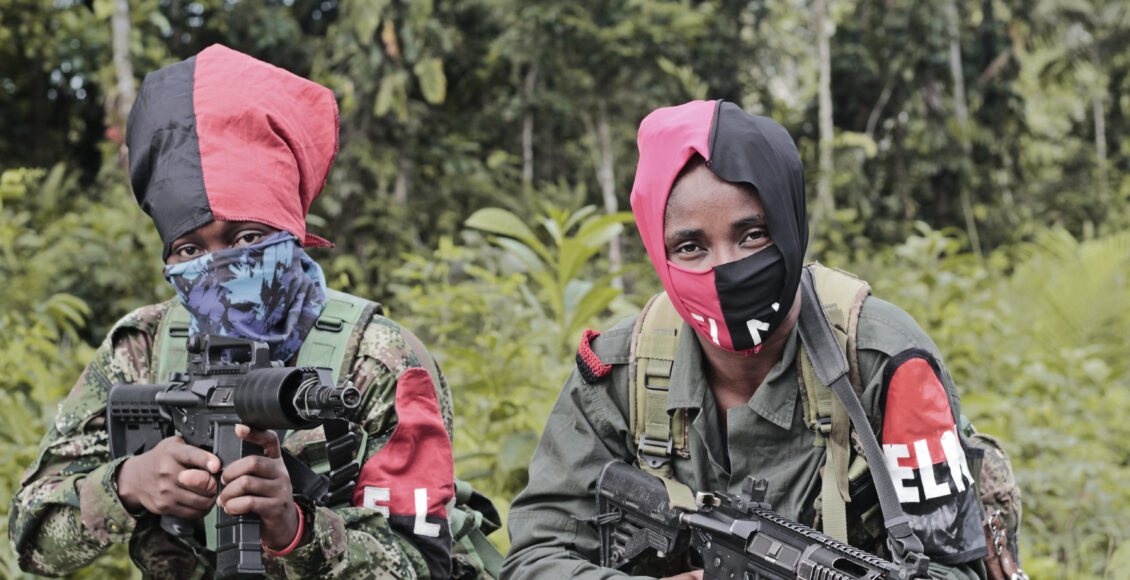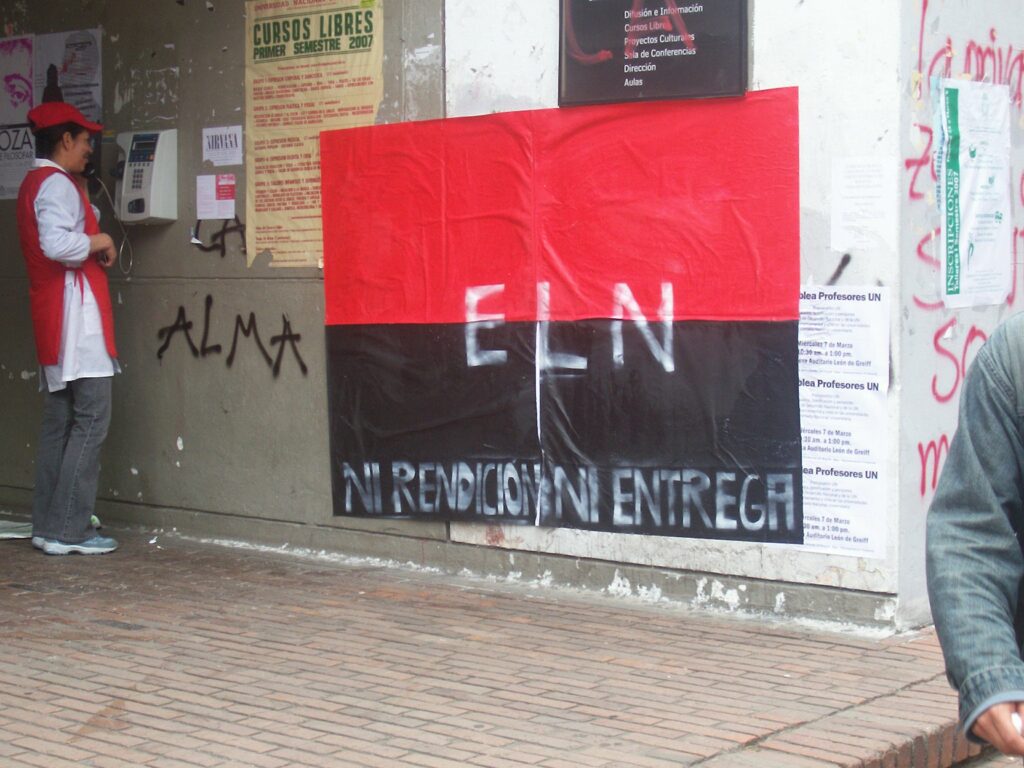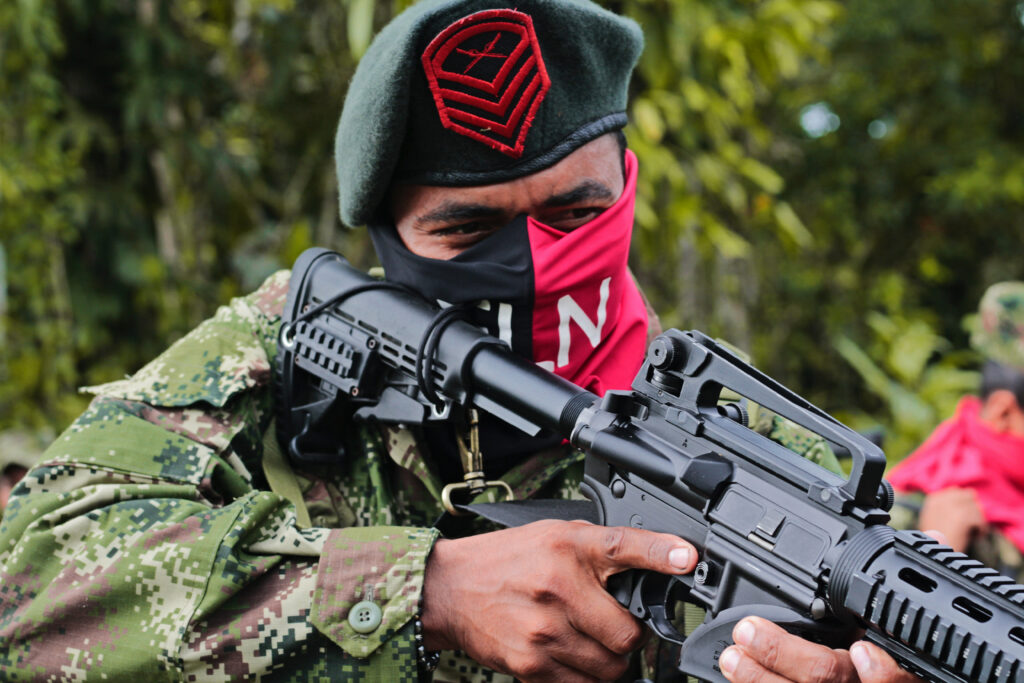From Liberation to Lucre: The Evolution of Colombia’s Marxist Insurgencies

“NI RENDICIÓN, NI ENTREGA.” Neither surrender, nor handover. These words, plastered on the walls of the National University of Colombia in Bogotá, continue to encapsulate the fierce, steadfast determination of the National Liberation Army (ELN), one of Colombia’s most formidable revolutionary militias. After decades of brutal fighting between leftist guerrilla groups, right-wing paramilitaries, and government forces, almost 300,000 Colombians have died and millions have been displaced. Colombian president Gustavo Petro seemed to be making progress with his “Total Peace” process, an initiative to end armed violence in Colombia through ground-up social change and negotiations with rebel groups. After former president Juan Manuel Santos demobilized Colombia’s strongest revolutionary faction, the FARC (Revolutionary Armed Forces of Colombia) through negotiations in 2016, Petro initiated talks with the ELN that continued successfully for almost a year.
Despite these efforts, the ELN’s revolutionary attitude resurfaced on September 17th when it attacked a military base near the Venezuelan border. Two soldiers were killed, over twenty were injured, and peace talks came to a halt. Ultimately, the ELN’s deep-rooted motivations suggest Petro’s efforts will face substantial obstacles. To understand these motivations, let’s closely examine the evolution of the ELN’s ideological and financial objectives.

When 18 Colombian students returned from ideological and military training in Cuba in 1963, they brought with them the framework for a Marxist guerilla group with plans to overthrow the Colombian government. Like the countless other revolutionary militias that emerged in Latin America during this period, the ELN was motivated primarily by left-wing ideology and was heavily influenced by the Cuban revolution. They sought to topple what they deemed to be a corrupt and futile Colombian government and uplift the poor, neglected, mostly Indigenous, rural and black populations through land redistribution and other socialist policies. In addition, the incorporation of Catholic principles into left-wing activism, exemplified by the liberation theology movement, ensured that many religious Colombians would also join the cause. This Marxist ideological zeal that swept through the continent in the 60s, inspiring the lower classes and urban intellectual types alike, was mostly organic, uncorrupted, and sui generis.
This initial ideological purity faded in the 1980s and 90s when the ELN, along with the other major paramilitary groups in Colombia like the FARC, began to involve themselves in the booming drug trade. The shift was born out of financial necessity. Given the inconsistent payoffs of kidnapping and extortion, more consistent cash flow was needed to finance the revolution. However, as time went on, narcotics became not only a funding source for the expensive, militaristic actions of these guerrilla groups but also an irresistible motivation itself.
The ELN plays an integral part in the modern drug trade, despite its denial of involvement. According to a 2009 report, paramilitary groups like the ELN are most active in territories with concentrated coca cultivation. These groups have also started implementing taxes on coca crops and involving themselves directly in the coca cultivation process, which has been generating an increasingly large chunk of their wealth. During the past few years, the Colombian military has seized several tons of cocaine in each raid they conduct, disrupting jungle labs that reportedly generate millions of US dollars a month. Last year, authorities made multiple massive cocaine seizures deep in ELN and FARC-D (an offshoot of the now-demobilized FARC) territory in Venezuela along the Colombian border. During the raids, uniforms belonging to paramilitary groups were discovered in the labs. This area is the same region where the ELN recently attacked, pointing to a connection between areas in which the ELN is participating in the drug trade and areas in which the ELN wants to demonstrate its military capacity. Given this correlation, it could be inferred that this latest attack was a warning to the Colombian government about intervening in the ELN’s drug trafficking and a protest against the government’s attempts to cut off the group’s main revenue source.

Given the enormous wealth the ELN generates from drug trafficking, convincing it to halt its criminal activity seems doomed from the start. Encouraging the ELN to stop its guerilla activity would mean encouraging it to stop its lucrative operations, an unfeasible demand. However, this most recent negotiating failure is more layered and complex. In 2016, the Colombian government successfully negotiated with and (mostly) demobilized the FARC, which was more powerful than the ELN is now and was also heavily involved in drug trafficking. The success of these negotiations stemmed from serious international pressure on the FARC (especially from the US), initiatives addressing the root causes of instability and criminal activity in its territory, and the opportunity for the FARC to become a legitimate political party. The ELN negotiations have enjoyed similar support and used similar strategies, yet they have been unsuccessful since the early 90s. Why?
First, the ELN is far more structurally disjointed than the FARC was. There is a centralized command system, but the mostly autonomous operation of guerilla cells has often led to conflicting strategies and objectives. For example, the ELN cited the government’s negotiations with a dissident faction without consulting central leadership as one of its reasons for obstructing peace talks. Even if negotiations were successful, implementing agreements would likely prove difficult due to the ELN’s fragmented structure.
Second, ELN forces enjoy the shelter of territory outside of Colombia’s reach in Venezuela. Although clashes have been reported recently between Venezuelan authorities and Colombian rebel groups, the Maduro regime’s relatively warm relationship with the ELN (which has its roots in Hugo Chávez’s presidency) has allowed the group more operational freedom than they’ve had in Colombia. The degree of support the ELN receives from the Maduro government is highly contested, but there’s no doubt the group has been able to entrench itself in Venezuela, becoming a truly binational organization.
These factors culminate in a third reason for negotiation failures: The ELN has no reason to continue negotiations because it doesn’t feel threatened. The ELN has experienced major blows in western Colombia, but these losses haven’t been enough to reverse the immense territorial gains the group experienced after the demobilization of the FARC in 2016. The ELN is bringing in massive amounts of drug money, enjoying refuge in Venezuela, and filling the territorial vacancies left by the FARC. To them, the Colombian government hasn’t proved itself strong enough to substantially threaten their power.
Gustavo Petro, a former guerilla with the M19 rebel group himself, thought he had the insider experience and political savvy to demobilize all of Colombia’s paramilitaries with his “Total Peace” initiative. The September 17th attack, which demonstrated the ELN’s reluctance to halt its increasing influence and brought the factors that contributed to negotiation failure to light, could prove to be the final nail in the coffin of this plan.
Given the ELN’s economic self-sufficiency, scattered leadership structure, and transnational presence, the history of negotiation failures between the Colombian government and the rebel group seems likely to continue. As the poster tells us, it won’t “hand over” or “surrender” anytime soon.
Featured image: Masked ELN soldiers pose with their weapons in 2018. Guerrilha ELN – Colômbia Profunda 11 by a photographer of the Brasil de Fato newspaper is licensed under CC BY-NC-SA 2.0.
Edited by David Amm.
